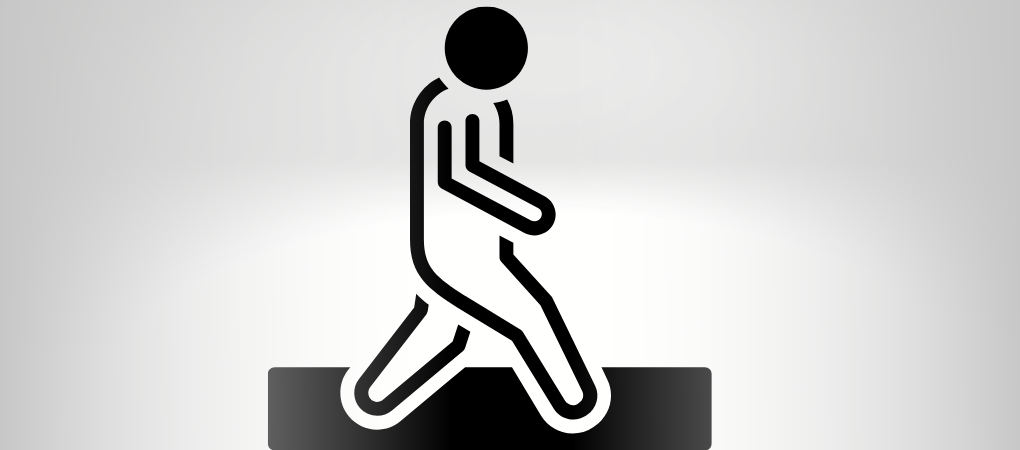Francesca Galiano
|
21/09/2022 - Last update 28/12/2022
Cherice N. Hill, M'Lindsey Romero, Mark Rogers, Robin M. Queen, Per Gunnar Brolinson | Year 2021
Effect of osteopathic manipulation on gait asymmetry
Pathology:
Gait asymmetry
Type of study:
Clinical study
Date of publication of the study’:
2021/Nov/18

Purpose of the study
- Objective: to evaluate if OMT can positively influence movement and gait asymmetry
- Measured outcomes:
- Primary: evaluation of peak vertical ground reaction force asymmetry, peak knee flexion angle, step length (distance between the point of initial contact of one foot and the point of initial contact of the opposite foot), stride length (distance between the point of initial contact of one foot and the point of initial contact of the same foot in the successive step) and stance time through limb symmetry index (LSI).
Participants
- Number: 42 people (22 female and 20 male, mean age 24.5 years)
- Criteria of inclusion: active adults (age 18-35 years).
- Criteria of exclusion: a history of important surgery to the lower extremities, undergoing treatments following a therapy for injuries or musculoskeletal diseases, injuries to the lower extremities over the last 3 months such as to limit the physical activity for more than one day.
- Groups of study: 1 group
- Group 1: OMT
- 22 female, mean age 24.9 years, mean height 1.70m, mean weight 66.6kg
- 20 male, mean age 24.2 anni, mean height 1.80m, mean weight 79.5kg
- Group 1: OMT
Interventions and evaluations
- Evaluation of the gait mechanics through 3D biomechanical assessment (including motion capture processed using Qualisys Track Manager software and force platform processed with Visual 3D software) before and after OMT
- participants wore specific clothes provided by the laboratory to reduce the interfering influence of clothing
- participants were assessed while walking on a treadmill for 5 minutes at a 1.5m/s speed
- Evaluation of the asymmetry related to peak and impulse of the vertical ground reaction force, peak of the knee flexion angle, step length, stride length and stance time through LSI
- 1 session of OMT
- OMT:
- postural structural assessment according to the Zink screening method to focus on fascial distortions and compensation mechanisms
- treatment aimed at resolving the detected somatic dysfunctions
- muscle energy technique for pelvic dysfunctions, high-velocity low-amplitude for the spine, articulatory technique for rib dysfunctions and facilitated positional release for sacral dysfunctions
- OMT administered by one osteopathic physician
Results
- Primary outcomes: OMT promoted a reduction of LSI in peak and impulse of the vertical ground reaction force in men, but not in women (for the latter the two parameters remained practically the same between before and after OMT), in a statistically significant manner. Specifically, OMT showed a moderate effect size (ie, the relevance of the result obtained) difference between men and women, and a very small effect size difference between before and after OMT.
- Further analyses: 25 people followed a common compensatory pattern (left/right/left/right rotation), whereas 17 people followed an uncommon compensatory pattern (right/left/right/left rotation). 14 showed a decompensation at the occipitoatlantal joint, 14 at the thoracolumbar junction, 11 at the cervicothoracic junction and 11 at the lumbosacral junction. Almost all participants showed dysfunctions at both the innominate bones and at the sacrum and more than two thirds at L5.
Discussion
OMT seems able to influence positively the gait symmetry in healthy people, at least in men. Potentially, it may take a longer time to see the effects of OMT on women, or, otherwise, women may have different gait determinants compared to men.
Considering the results of previous studies, it is important to realize that when evaluating postural aspects related to compensatory mechanisms it is essential to pay attention to the position (orthostatic, supine, prone, etc.) and to weight distribution, as the results of the evaluation may otherwise be distorted or inconsistent with each other.
Gait asymmetry is an important aspect to consider as it is a risk factor for musculoskeletal problems or injuries. On the other hand, it may depend on an asymmetric weight distribution, due to anatomical or physiological factors, which can produce different somatic dysfunctions at the pelvic, sacral and lumbar levels.
Finally, it is important to note that the use of a treadmill might have altered normal walking, as well as the indication to correct the center of gravity often given to the participants.
The review of Osteopedia
By Marco Chiera
Strengths: well organized introduction; good description of the osteopathic and biomechanical assessments; the use of gender as an independent variable; good presentation of the implications of the study (and of possible more robust future studies) in the discussions and of possible interacting factors.
Limiti: in the introduction, some references could have been better explained and analyzed more in depth; although the data related to height and weight were collected they were not utilized. It would have been interesting to also evaluate the level of physical activity of the participants.

Are you an osteopath?
Register and enjoy the membership benefits. Create your public profile and publish your studies. It's free!
Register now
School or training institution?
Register and enjoy the membership benefits. Create your public profile and publish your studies. It's free!
Register now
Do you want to become an osteopath? Are you a student?
Register and enjoy the membership benefits. Create your public profile and publish your studies. It's free!
Register now







